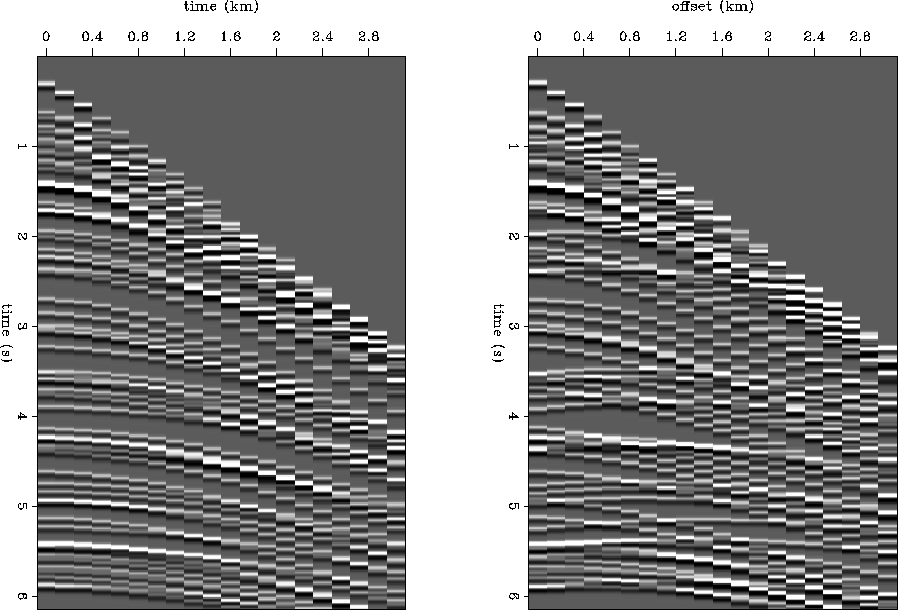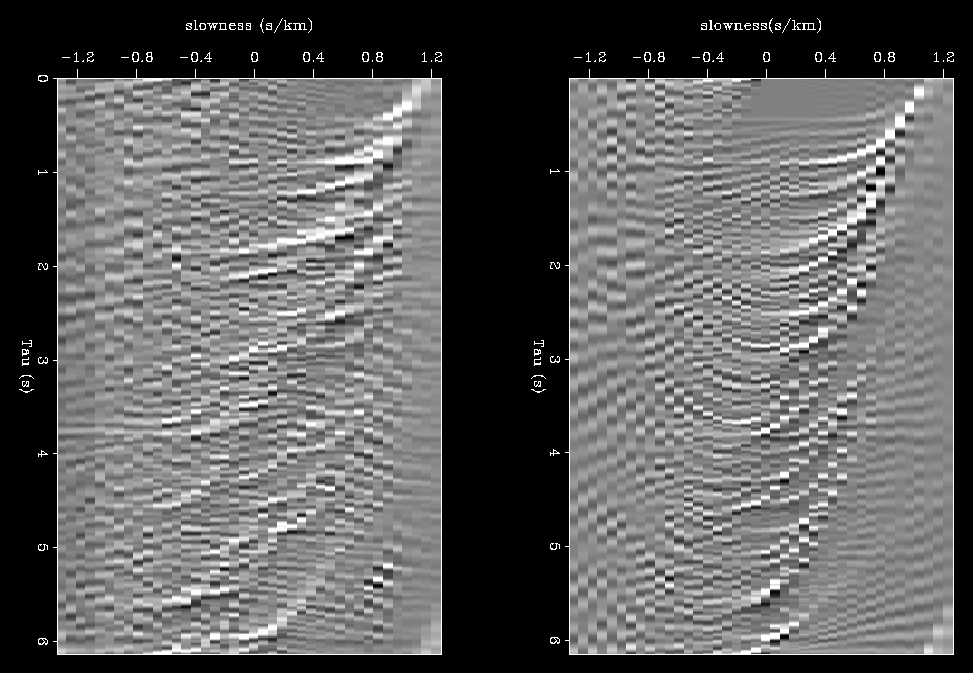 |
Figure 4 (left) cmp gather for 20 point offset sampling, (right) shot gather for 20 point offset sampling
The second example illustrates a significant difference in the resulting slant stacks. The cmp and shot gathers that the transforms were applied to are illustrated in the 4. A comparison of these two stacks reveal a few apparently different features worthy of mention. The hyperbolic events on the cmp gather are all approximately tangential to a general hyperbolic trend. These events interfere over large ranges, creating long trends of high and low amplitude bands which extend in a coherent way along the hyperbolas . Even so, aliasing can be expected over short ranges. Careful scrutiny of the shot gather, on the other hand, reveals a more confused arrangement of energy in the region of the hyperbolic asymptotes. Sharply conflicting dips of the off axis hyperbolas confuse the hyperbolic forms, causing much more of the gather to be aliased than in the case of the cmp gather.
 |
 |
A comparison of the Tieman method applied to the cmp gathers and the direct application of slant stacks to the shot gathers reveals a significantly different result. Coherent energy is distributed over a larger range of slowness values in the case of the Tieman transformed stacks than in the case of the stacks applied directly to the shot gather. Both methods have similar results for large slowness values at earlier retarded times, but this would be expected due to the similarity in dip and energy of the earlier events in both gathers. The similarity of the two results changes promptly as later times are considered. The negative dips in the case of the directly applied slant stacks are washed out in a cloud of aliased energy, where as in the case of Tieman`s transform, the negative slowness events are distinguishable to around -0.5 s/km. A large band void of energy exists in the directly applied slant stack case from earlier times down to the latest times for relatively steep dips, while Tieman`s method retains energy with distinguishable structure in this region. A curious arcing pattern exists on the directly applied stacks which do not in the Tieman converted stacks which also does not appear in the previous test with 80 point sampling.